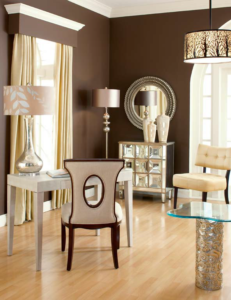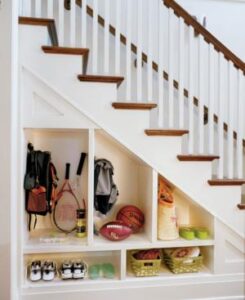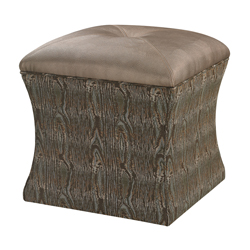Downsizing? Interior Design & Furniture Tips for Creating and Maximizing Space

It seems counter-intuitive that one of the most on-trend things you can do today, in terms of home ownership and interior design, is live in a smaller home. Downsizing is becoming more and more popular, as people increasingly realize they occupy a home larger than they need, perhaps an unused spare bedroom or home office, a basement or attic that’s going to waste, or a third bathroom that nobody ever enters, let alone actually uses.
With well-designed interiors and clever use of space, you can live with less, enjoying all the advantages of a smaller home and lower your carbon footprint with none of the disadvantages. The idea of downsizing can seem a bit daunting, even if you have space in your home you’re not using—it may conjure up images of cramped rooms, narrow hallways, and dark spaces. A small home definitely does not have to be that way. There’s so much you can do with smaller spaces, and in some ways, working with less square footage forces you be more creative with design ideas, and explore possibilities you may not think to consider.

The key is careful planning, of your home’s layout, and of the way you decorate it. Floor planning is the best way to figure out how to use your space, and while there are now apps that assist you do this, it’s still just as effective to use pen and paper and an experienced design professional will create options beyond the cookie cutter method of drop in place furnishings.
Multi-Functional Fixtures and Furnishings Help You Do More with Less

Planning aside, the most important aspects of furnishing a small home (or room) is with creative space planning and highly selective furnishing choices. In terms of using space effectively, there are typically nooks and crannies, even in a smaller home, where extra storage can easily be added. Above or over doors, under beds, cupboard door interiors, and beneath stairs, are spaces that go unused in larger homes, but in a smaller one, can be modified with shelves, drawers, or storage modules turning them into useful spaces.
When it comes to the furnishings you choose, furniture with more than one function is particularly useful. If your home doesn’t have an office or spare bedroom, the simplest and most practical solution for providing accommodation for guests is a comfortable fold-out sleep sofa. Whatever furniture choices you decide scale is most important to not overwhelm the space with excessively large furnishings designed for today’s larger homes. Suitably scaled smaller furnishings will make the small spaces feel larger.




Highly useful is the humble ottoman—part footrest, part stool, and part storage unit—a smaller one can serve as a chair, a larger one as a coffee table, and an ottoman of any size can double as extra storage.
A Small Room doesn’t have to Feel Small

Designing small spaces isn’t just about using space effectively, it’s also about making spaces look bigger than they are. Small spaces that are badly designed feel claustrophobic and are unpleasant to be in, but it’s not difficult to employ a few design tricks to open up even the smallest rooms. Mirrors, shiny silver surfaces and crystal bounce light in many directions add a glint of light airy feel.
Downsizing Ideas contributed by reader, Jenni Cooper, edited and photos by Peggy Golden, ASID
Error: Contact form not found.







